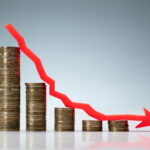Although insurance rates have been drifting upward in recent months, the property/casualty industry is unlikely to see a return to the traditional hard market this year or next, an insurance expert told reinsurance actuaries at the Casualty Actuarial Society’s Seminar on Reinsurance.
Robert Hartwig, president and economist of the Insurance Information Institute, noted that four criteria have to be present for a truly hard market, one in which rates climb sharply — in excess of 10 to 15 percent or more:
First, the industry must endure a sustained period of large underwriting losses. Only when underwriting losses are large and sustained do insurers turn disciplined, Hartwig said.
But this may be beginning, he said. Underwriting losses hit $36.5 billion last year, driven by above average losses from U.S. catastrophes. Last year was the fifth worst ever for insured catastrophe losses in the United States, adjusted for inflation.
So far this year, catastrophes have been relatively benign.
Second, the industry suffers a material decline in industry surplus or capacity. When surplus falls, rates rise as customers compete for access to the surplus. But industry surplus remains high, Hartwig said, hitting a record $565 billion as of first quarter 2011 and falling off only slightly during 2011, despite all the catastrophic losses.
Third, the reinsurance market must be “tight,” meaning reinsurance costs are rising and there is a shortage of reinsurance capital.
That’s somewhat in place, Hartwig said. Much of the excess capacity in reinsurance at the beginning of 2011 was eaten up by the cost of earthquakes in Japan and New Zealand and floods in Thailand.
Reinsurance rates have risen, especially in markets where the mega-catastrophes occurred. And in the United States, reinsurance prices for catastrophe business are “modestly higher,” Hartwig said, about 8 percent.
But the current increases pale in comparison to increases seen after other bad years for catastrophe, he observed. More important, the current environment contradicts “this notion that somehow big catastrophe losses are somehow [by themselves] going to affect prices here,” he said. “That notion is incorrect.”
Finally, the industry must show renewed underwriting and pricing discipline.
There are some signs this is beginning to happen, Hartwig said. Rates are creeping up in commercial lines, after having fallen steadily for several years.
Commercial insurance rates rose 4.4 percent in the first quarter, which was the third consecutive quarter of higher rates, according to the Council of Insurance Agents and Brokers. That followed 30 consecutive quarters of declining rates.
Of all lines, workers’ compensation rates are rising fastest, up 7.4 percent in first quarter. But that’s in part because results have deteriorated so much in that line. Workers’ comp combined ratios were 110.6, 116.8 and 115.0 over the past three years, vs. 99.5, 101.0 and 107.5 on commercial lines overall.
Workers’ compensation results are as bad as they were a decade ago, he said, the last time the industry experienced a hard market.
The Casualty Actuarial Society has 5,700 members in P/C insurance, reinsurance, finance, risk management, and enterprise risk management.
Topics Catastrophe USA Excess Surplus Workers' Compensation Pricing Trends Reinsurance Property Casualty Market
Was this article valuable?
Here are more articles you may enjoy.


 New York Governor Hochul Vows to Tackle Insurance Affordability, Litigation and Fraud
New York Governor Hochul Vows to Tackle Insurance Affordability, Litigation and Fraud  Florida OIR Triples the Size of Citizens’ Rate Decrease
Florida OIR Triples the Size of Citizens’ Rate Decrease  Adjusters Launch ‘CarFax for Insurance Claims’ to Vet Carriers’ Damage Estimates
Adjusters Launch ‘CarFax for Insurance Claims’ to Vet Carriers’ Damage Estimates  Zurich Makes £7.7 Billion Bid for Specialty Insurer Beazley
Zurich Makes £7.7 Billion Bid for Specialty Insurer Beazley 


